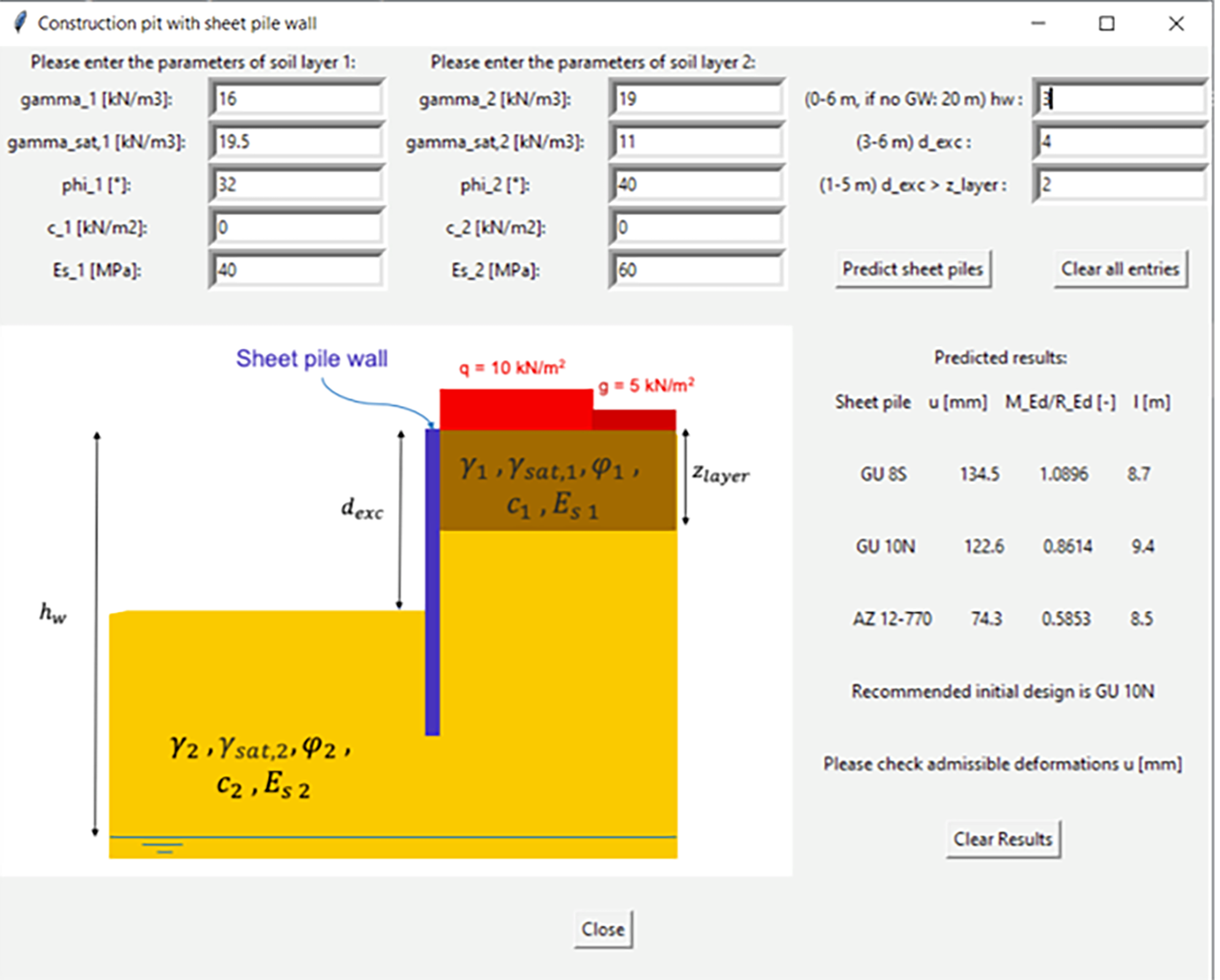Machine learning-based generative design and verification of construction pits
Author: Liliana Florez Hernandez
Language: English
Abstract
Due to the high amount of different boundary conditions presented when excavating a construction pit, the design and dimensioning of the optimal retaining system can be a long and iterative process. The engineering effort during the detailed design phase of construction pit works can be significantly reduced, if an appropriate preliminary design is proposed.
The goal of this Master’s Thesis is to implement a machine learning algorithm for the design of a construction pit. Since not enough data from real construction projects were available, the input to train the machine learning algorithm was generated with WALLS-Verbau, a commercial software from FIDES DV-Partner for designing of retaining systems.
The case of an embedded wall with two soil layers and a lowered groundwater table inside the construction pit was investigated. For retaining systems, different profiles of sheet pile walls were analysed.
The range of the input parameters (such as soil parameters and geometric properties) was determined by analysing existing excavation projects. In total, around 3,000 different combinations of input parameters were generated. From each of those inputs, WALLSVerbau calculated the distribution of the wall deformation, the bending moments and the necessary wall length. With the data set of the calculated simulations, the efficient software bibliography XGBoost was able to make a fast and accurate prediction for the output parameters of WALLS-Verbau.
In a last step, a graphical user interface (GUI) was coded to improve the user friendliness of the program.

